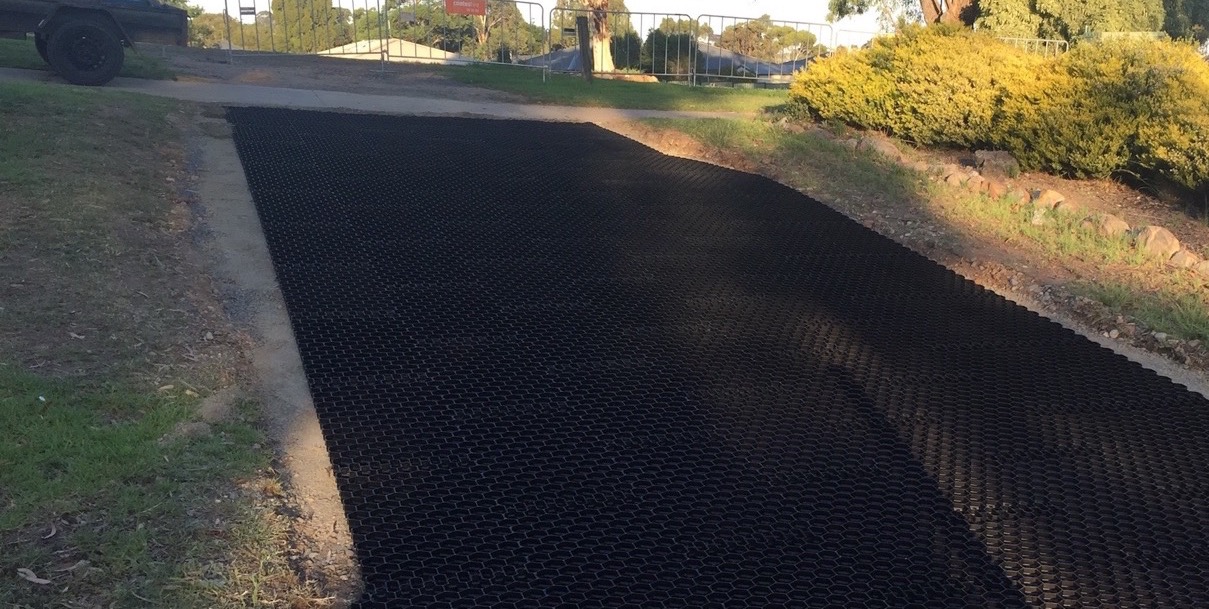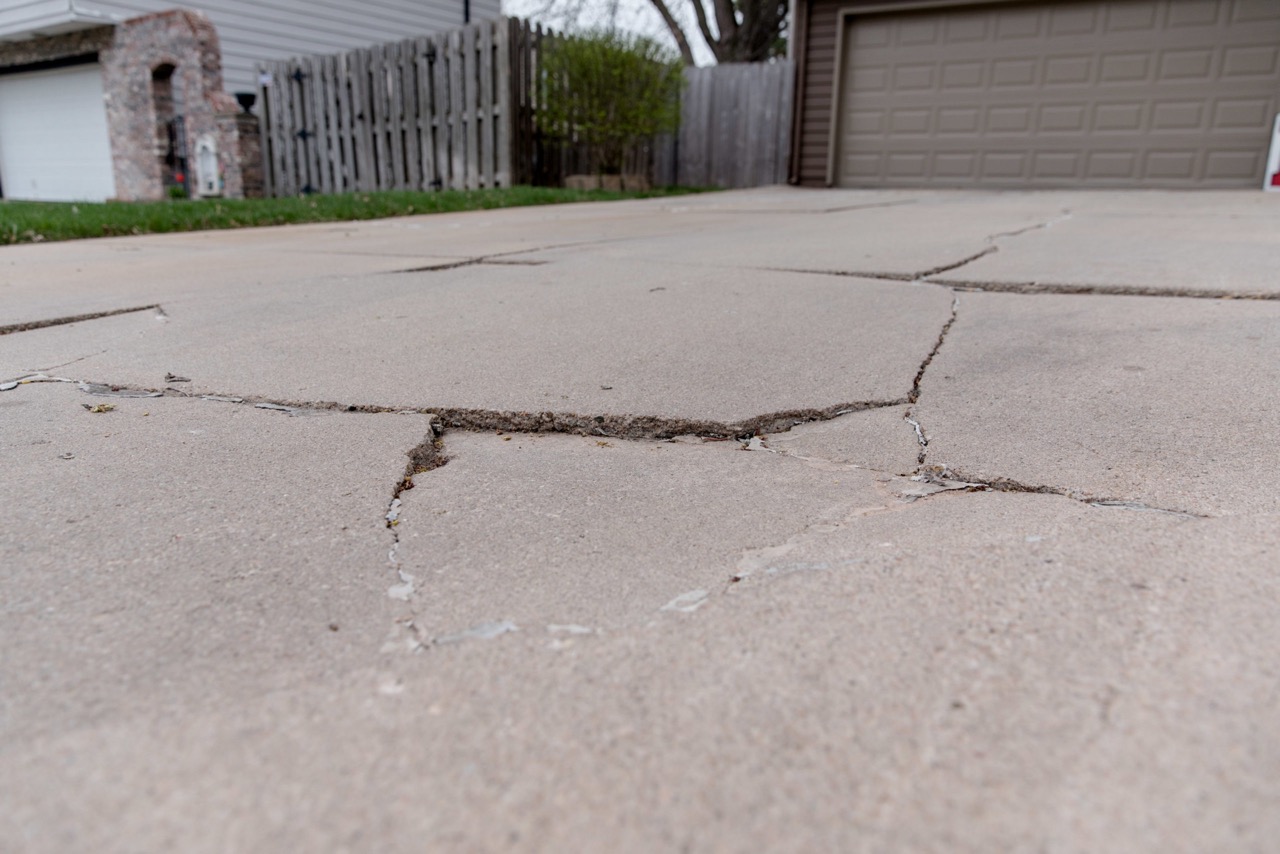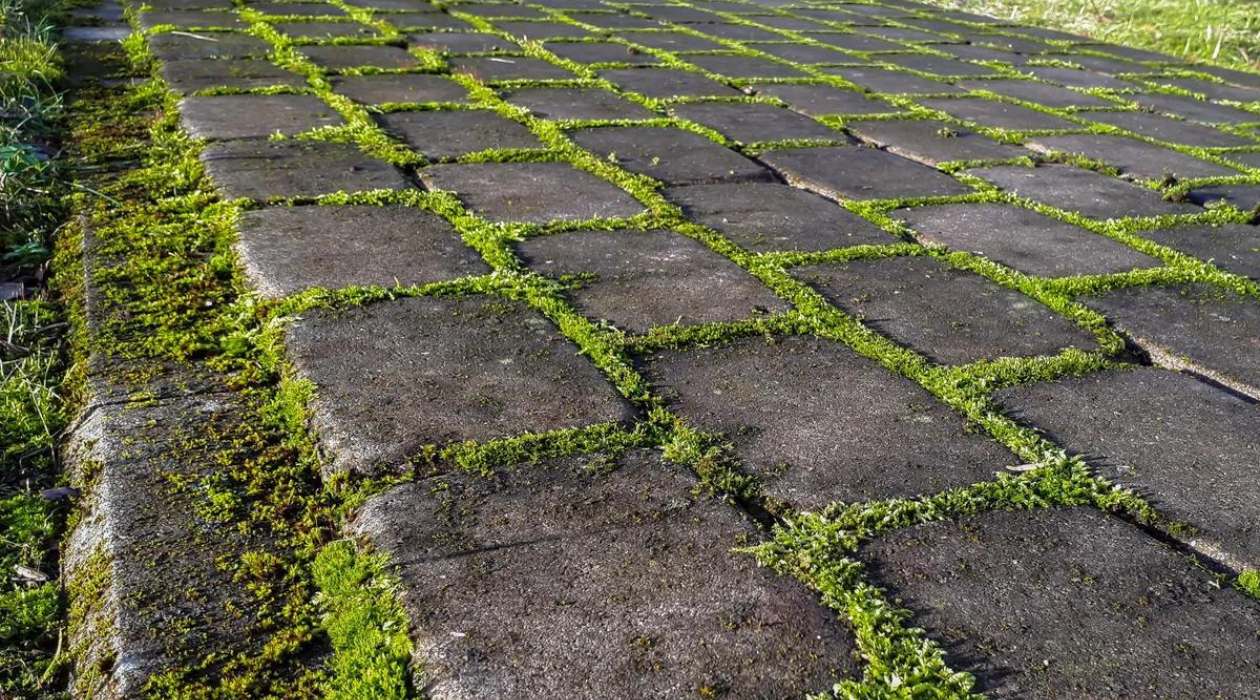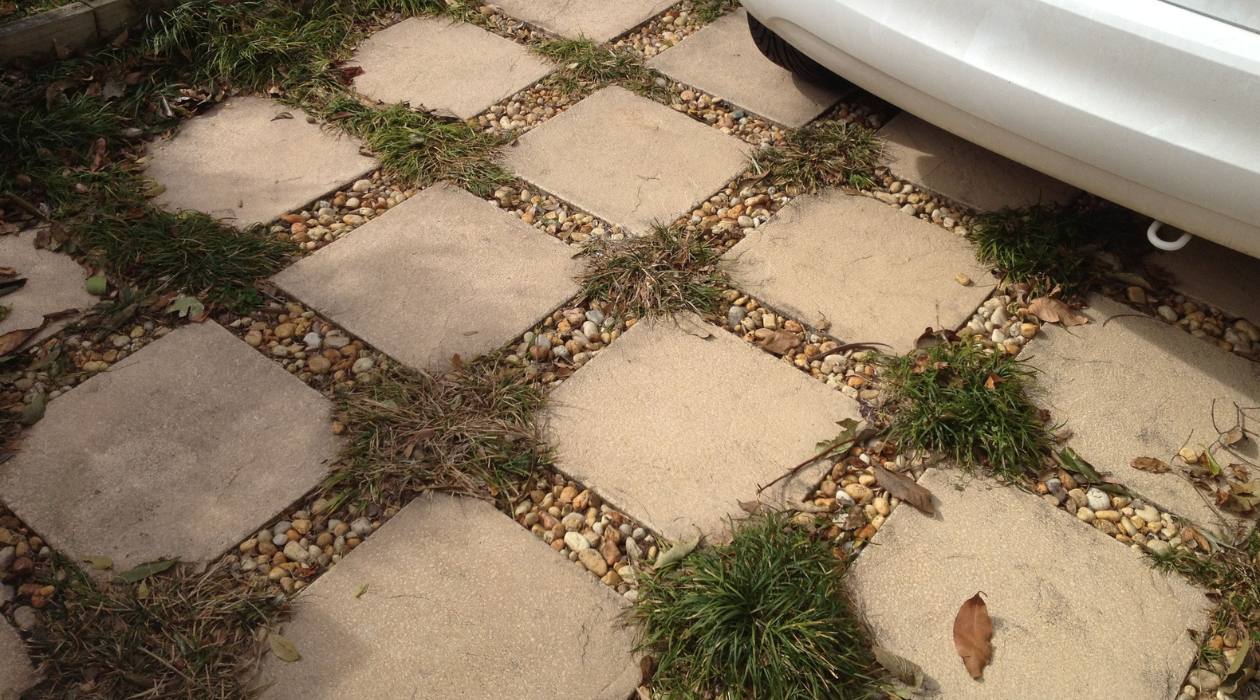

Articles
What Is A Culvert Driveway
Modified: February 23, 2024
Learn all about culvert driveways in this informative article. Discover the benefits, drawbacks, and essential tips for designing and maintaining culvert driveways.
(Many of the links in this article redirect to a specific reviewed product. Your purchase of these products through affiliate links helps to generate commission for Storables.com, at no extra cost. Learn more)
Introduction
A culvert driveway is a type of driveway construction that utilizes a culvert, which is a pipe or structure used for channeling water under a roadway or other obstruction. Culvert driveways are commonly used in areas where there is a need to cross a drainage ditch, creek, or other watercourse. They provide a convenient and efficient way to access properties while maintaining the flow of water underneath.
In this article, we will explore the definition of a culvert driveway, how they work, the benefits they offer, important considerations before installing one, the steps involved in the installation process, maintenance and care guidelines, as well as common issues and troubleshooting tips.
Whether you are planning to install a culvert driveway or simply interested in learning more about this type of construction, this article will provide you with valuable insights to help you make informed decisions.
Key Takeaways:
- Culvert driveways provide efficient water management, landscape preservation, and enhanced safety. Proper installation, regular maintenance, and troubleshooting are essential for their longevity and functionality.
- Before installing a culvert driveway, consider regulations, site assessment, professional consultation, budget, and maintenance. Culvert driveways offer a cost-effective, durable, and adaptable solution for crossing watercourses.
Read more: What Is An Easement Driveway
Definition of a Culvert Driveway
A culvert driveway is a driveway construction method that incorporates a culvert, a pipe or structure designed to allow the flow of water beneath a surface such as a roadway or driveway. Culverts are typically made of materials such as concrete, metal, or plastic and come in various shapes and sizes.
The primary purpose of a culvert driveway is to provide a means of crossing a watercourse or drainage ditch while maintaining the integrity of the surrounding landscape and preventing erosion. By creating a bridge-like structure, culvert driveways enable vehicles to safely pass over the watercourse while allowing water to pass through unimpeded.
There are several types of culverts commonly used in driveway construction, including circular culverts, box culverts, and arch culverts. The choice of culvert type depends on factors such as the volume and flow rate of the water, the soil conditions, and the desired aesthetic of the driveway.
Culvert driveways are often seen in rural areas where properties are situated near natural water sources. They are also frequently used in commercial and industrial settings where the need for efficient transportation across drainage systems is essential.
It is important to note that culvert driveways should be designed and constructed in accordance with local regulations and engineering standards to ensure safety and compliance. Local municipalities or civil engineering professionals can provide guidance on the appropriate design and installation practices for culvert driveways in specific areas.
Now that we have defined what a culvert driveway is, let’s delve into how they actually work in practice.
How Culvert Driveways Work
Culvert driveways are designed to provide a safe and efficient passage over watercourses or drainage ditches. They work by allowing water to flow through the culvert while supporting the weight of vehicles that cross over it.
When designing a culvert driveway, engineers take into consideration the volume and flow rate of the water, as well as the size and capacity of the culvert needed to accommodate the anticipated water flow. The culvert is typically placed beneath the driveway surface at a specific depth to ensure proper water flow and structural stability.
It’s important to choose the appropriate culvert size and material based on the specific site conditions, including the width of the watercourse and the expected traffic load. Common culvert materials include concrete, metal, and plastic, each with its own advantages and durability factors.
The culvert itself acts as a bridge, supporting the weight of vehicles while allowing water to pass unobstructed. The culvert is embedded in the ground and typically extends beyond the edges of the driveway to prevent erosion and provide stability.
Proper slope and alignment are essential elements in the design of a culvert driveway. The driveway slope must allow for efficient water flow into the culvert, preventing the accumulation of water and potential flooding. The alignment ensures that the culvert and driveway are properly aligned with the watercourse, enhancing safety and navigability.
During heavy rainfalls or periods of high water flow, the culvert allows excess water to pass underneath the driveway, preventing flooding and minimizing damage to the property. This helps to maintain the integrity of the driveway and the surrounding landscape.
In summary, culvert driveways work by providing a passage over watercourses and drainage ditches while allowing water to flow freely through the culvert. They are designed to withstand the weight of vehicles and maintain the structural integrity of the driveway, ensuring safe and efficient transportation.
Next, let’s explore the benefits that culvert driveways offer.
Benefits of Culvert Driveways
Culvert driveways offer several advantages compared to other types of driveway construction methods. Here are some of the key benefits:
- Effective drainage: One of the primary benefits of culvert driveways is their ability to effectively manage water flow. By allowing water to pass through the culvert, culvert driveways prevent the accumulation of water on the surface and minimize the risk of flooding. This is especially important in areas prone to heavy rainfall or near water bodies.
- Preservation of landscape: Culvert driveways minimize the impact on the surrounding landscape and natural water systems. By allowing water to flow underneath the driveway, they avoid the need for costly and intrusive methods such as bridges or concrete embankments. This helps to preserve the aesthetic appeal of the property and minimize environmental disturbance.
- Enhanced safety: Culvert driveways improve safety by providing a stable and secure passage over watercourses. They minimize the risk of accidents and vehicle damage that can occur when driving through flooded areas. Additionally, culvert driveways can incorporate proper road markings and signage to further enhance safety.
- Durability: Culvert driveways are designed to be structurally sound and durable. The use of sturdy materials like concrete or metal ensures that the driveway can withstand heavy loads and harsh weather conditions. With proper maintenance, culvert driveways have a long lifespan, providing reliable access to the property for years to come.
- Cost-effective: Compared to other driveway construction methods, culvert driveways can be a cost-effective solution. They require less extensive site preparation and construction work compared to building bridges or embankments. This can translate into lower overall project costs.
- Flexibility and adaptability: Culvert driveways are versatile and can be adapted to various site conditions. They can be designed to accommodate different driveway widths and lengths, as well as varying water flow rates. This makes them suitable for a wide range of residential, commercial, and industrial applications.
These benefits make culvert driveways an attractive option for property owners seeking a reliable and practical solution for crossing watercourses or drainage ditches while promoting effective water management and minimizing environmental impact.
Next, we will discuss important considerations to keep in mind before installing a culvert driveway.
Considerations Before Installing a Culvert Driveway
Before installing a culvert driveway, there are several key considerations to keep in mind. Taking these factors into account will help ensure a successful and functional driveway that meets your specific needs. Here are some important considerations:
- Regulations and permits: Check with your local municipality or relevant authorities to understand any regulations or permits that may be required for installing a culvert driveway. There may be guidelines regarding culvert size, material, and placement that need to be followed to comply with local codes.
- Site assessment: Conduct a thorough assessment of the site where the culvert driveway will be installed. Consider factors such as the volume and flow rate of the water, soil conditions, and the size and type of vehicles that will be using the driveway. This information will help determine the appropriate size and specifications for the culvert.
- Professional consultation: It is advisable to consult with civil engineering professionals or driveway contractors who have experience with culvert driveway installations. They can provide valuable insights and guidance throughout the process, ensuring that the driveway is designed and constructed properly to meet safety and performance standards.
- Driveway design: Consider the design of the driveway in relation to the surrounding landscape and the intended use of the property. Factors such as driveway width, alignment, and surface material should be taken into account to create a functional and aesthetically pleasing driveway.
- Budget considerations: Determine your budget for the installation of the culvert driveway. Consider costs related to the materials, labor, equipment, and any additional site preparations that may be necessary. Obtaining multiple quotes from different contractors can help you compare prices and make an informed decision.
- Maintenance requirements: Think about the long-term maintenance and care of the culvert driveway. Culverts may require periodic inspection and cleaning to ensure proper water flow. Additionally, the driveway surface should be regularly maintained to prevent cracks, potholes, or erosion.
- Environmental impact: Assess the potential environmental impact of the culvert driveway installation. Consider how the structure may affect water flow, erosion, and the habitat of local flora and fauna. Implement measures to minimize disruption to natural systems, such as proper erosion control and vegetation management.
By carefully considering these factors before installation, you can ensure that your culvert driveway is well-designed, complies with regulations, and meets your specific needs and preferences.
Next, let’s explore the steps involved in installing a culvert driveway.
When installing a culvert driveway, make sure to properly size the culvert based on the water flow and the weight of vehicles using the driveway. It’s important to also consider the slope and soil conditions to ensure proper drainage and stability.
Read more: What Is An Asphalt Driveway
Steps to Install a Culvert Driveway
Installing a culvert driveway requires careful planning and precise execution to ensure a sturdy and functional driveway. While the specific steps may vary depending on the site conditions and project requirements, here are the general steps involved in installing a culvert driveway:
- Site preparation: Clear the area where the driveway will be installed by removing any vegetation, rocks, or debris. Ensure the site is properly leveled and graded to allow for proper water flow and driveway alignment.
- Culvert selection: Choose the appropriate size and type of culvert based on the site assessment and anticipated water flow. Consider factors such as the width and depth of the watercourse, soil conditions, and expected traffic load. Consult with professionals to ensure the culvert meets the necessary specifications.
- Excavation: Excavate a trench of the appropriate depth and width to accommodate the culvert. Follow the guidelines provided by the manufacturer or engineering professionals. Ensure the trench is properly compacted to provide a stable base for the culvert.
- Culvert installation: Carefully place the culvert into the excavated trench, making sure it is aligned properly and at the correct slope. Secure the culvert in place and backfill the trench with compacted soil, ensuring adequate compaction to provide stability and prevent settling.
- Driveway surface preparation: Prepare the surface where the driveway will be constructed. This may involve grading, compacting the soil, and adding a layer of gravel or other suitable base material to provide a stable foundation for the driveway surface.
- Driveway construction: Install the driveway surface material, such as asphalt, concrete, gravel, or pavers, depending on your preference and budget. Follow the proper construction techniques and ensure the surface is properly compacted and leveled.
- Driveway finishing touches: Complete the installation by adding any necessary finishing touches such as road markings, signage, and landscaping. Ensure proper drainage around the driveway to prevent pooling of water and potential damage.
- Maintenance and regular inspection: After the culvert driveway is installed, it is essential to regularly inspect and maintain the culvert and driveway surface. Clean the culvert of any debris or obstructions to ensure proper water flow. Address any issues with the driveway surface, such as cracks or erosion, in a timely manner.
It’s important to note that the installation of a culvert driveway should be done by professionals with experience in driveway construction and culvert installation, as it requires specialized knowledge and equipment.
Now that you are familiar with the installation process, let’s move on to discussing maintenance and care for culvert driveways.
Maintenance and Care for Culvert Driveways
Maintaining a culvert driveway is essential to ensure its longevity and functionality. By implementing regular maintenance practices and addressing any issues promptly, you can keep your culvert driveway in optimal condition. Here are some important maintenance and care tips for culvert driveways:
- Inspect the culvert regularly: Regularly inspect the culvert for any signs of damage, debris buildup, or blockages. Clear away any obstructions that could impede water flow and compromise the integrity of the culvert.
- Monitor water flow: Keep an eye on the drainage patterns around the culvert driveway, especially during heavy rainfall or periods of high water flow. Ensure that water is flowing freely through the culvert and that there are no signs of erosion or pooling around the driveway area.
- Address driveway surface issues: Repair any cracks, potholes, or deterioration on the driveway surface promptly. Fill cracks with suitable materials and repair or resurface damaged areas as needed. Regularly apply sealant to protect the surface and extend its lifespan.
- Manage vegetation: Regularly trim and manage vegetation around the culvert driveway to prevent roots from infiltrating the culvert or causing damage to the driveway surface. Additionally, ensure that trees and shrubs are planted at a safe distance from the culvert to avoid any future disruptions.
- Proper drainage maintenance: Clear the drainage channels or ditches associated with the culvert driveway to prevent debris accumulation and potential water backup. Regularly remove leaves, sediment, or other materials that could impede water flow.
- Address erosion concerns: If there are signs of erosion around the culvert driveway, take appropriate measures to prevent further erosion. This may include adding erosion control measures, such as gravel, riprap, or vegetation, to stabilize the soil and redirect water flow away from vulnerable areas.
- Follow seasonal maintenance: Adjust your maintenance routine based on seasonal changes. For example, in winter, ensure proper snow removal to prevent the accumulation of ice and to avoid any damage caused by freezing and thawing cycles.
- Consult with professionals: If you encounter any significant issues or concerns with your culvert driveway, consult with professionals experienced in culvert maintenance and repair. They can assess the situation and provide expert advice or perform necessary repairs.
Regular maintenance and care will help preserve the functionality and lifespan of your culvert driveway. By addressing any issues promptly and proactively managing maintenance tasks, you can ensure a safe and reliable passage across your culvert driveway for years to come.
Next, we will discuss common issues and troubleshooting tips for culvert driveways.
Common Issues and Troubleshooting
While culvert driveways are designed to be durable and resilient, they can sometimes encounter issues that require troubleshooting and repairs. Here are some common issues that may arise with culvert driveways and some recommended troubleshooting steps:
- Clogging: Debris, leaves, or sediment can accumulate in the culvert, obstructing water flow. Regularly inspect and clean the culvert to remove any blockages. Consider installing a debris screen or grate at the inlet of the culvert to prevent large debris from entering.
- Erosion: Improper water flow or inadequate erosion control measures can lead to erosion around the culvert driveway. Address erosion concerns by stabilizing the soil with appropriate erosion control measures such as gravel, riprap, or vegetation. Consult with experts if erosion continues to be a persistent issue.
- Surface cracks: Over time, the driveway surface may develop cracks due to natural wear and tear or improper installation. Fill small cracks with suitable materials and consider resurfacing or sealing the driveway surface to prevent further deterioration.
- Sinkholes: In some cases, sinkholes can form near the culvert driveway, indicating a potential issue with soil stability or culvert integrity. Consult with professionals to assess the situation and take appropriate measures to address the sinkhole, which may involve filling with suitable material and compacting it.
- Suspected damage to culvert: If you suspect damage to the culvert, such as cracks or structural issues, consult with professionals experienced in culvert maintenance and repair. They can conduct a thorough assessment, provide expert guidance, and perform any necessary repairs or replacements.
- Traffic load issues: If the driveway experiences excessive traffic load or heavy vehicles, it can put strain on the culvert and the driveway structure. Consider reinforcing the driveway with suitable materials or consulting with professionals to ensure the driveway can withstand the intended traffic load.
In all cases, it is recommended to consult with professionals specializing in culvert driveways and drainage systems when experiencing significant issues. They can provide accurate assessments, expert advice, and effective solutions to preserve the functionality and longevity of your culvert driveway.
By addressing issues promptly and implementing appropriate troubleshooting steps, you can ensure that your culvert driveway remains safe, functional, and durable for the long term.
Now, let’s conclude our article.
Conclusion
Culvert driveways provide a practical and efficient solution for crossing watercourses or drainage ditches while maintaining proper water flow. They offer several benefits, including effective water management, preservation of the landscape, enhanced safety, durability, cost-effectiveness, and adaptability.
Before installing a culvert driveway, it is important to consider regulations, conduct a site assessment, consult with professionals, determine your budget, and plan for maintenance requirements. Proper installation involves site preparation, culvert selection and placement, driveway surface preparation and construction, and finishing touches.
To ensure the longevity and functionality of your culvert driveway, regular maintenance and care are crucial. This includes inspecting the culvert, monitoring water flow, addressing driveway surface issues, managing vegetation, maintaining proper drainage, and following seasonal maintenance routines.
Common issues that may arise with culvert driveways include clogging, erosion, surface cracks, sinkholes, culvert damage, and traffic load issues. Troubleshooting these issues involves cleaning the culvert, addressing erosion concerns, repairing cracks, filling sinkholes, repairing or replacing the culvert if needed, and reinforcing the driveway as necessary.
Overall, culvert driveways are an effective and reliable option for safely crossing watercourses while promoting proper water management. By understanding the definition, benefits, installation process, maintenance requirements, and troubleshooting tips for culvert driveways, you can make informed decisions and enjoy a durable and functional driveway that enhances your property for years to come.
Frequently Asked Questions about What Is A Culvert Driveway
Was this page helpful?
At Storables.com, we guarantee accurate and reliable information. Our content, validated by Expert Board Contributors, is crafted following stringent Editorial Policies. We're committed to providing you with well-researched, expert-backed insights for all your informational needs.















0 thoughts on “What Is A Culvert Driveway”